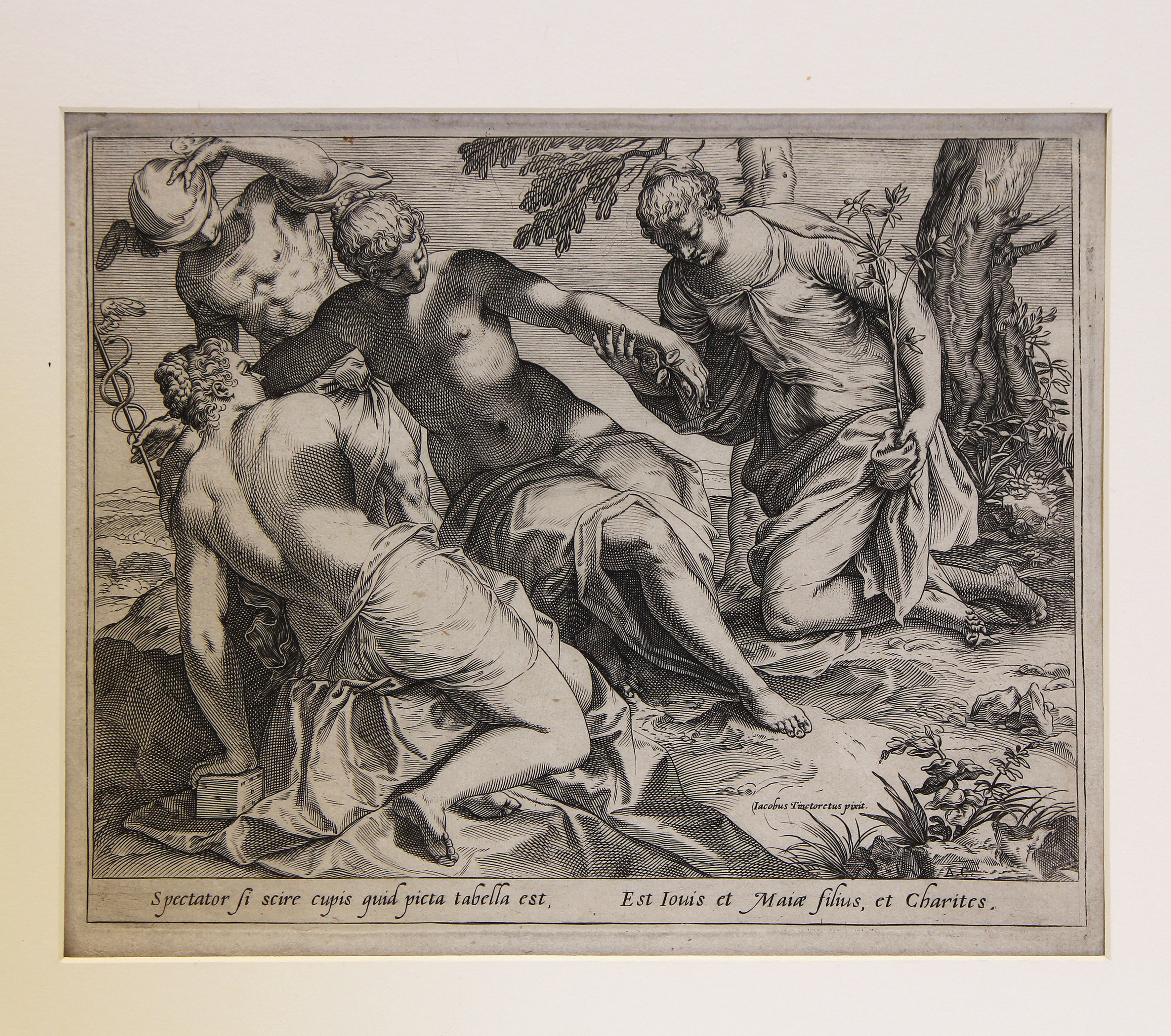Social World of the Artist : Mercury and the Three Graces
Mercury and the Three Graces is a print of an engraving by Agostino Carracci. Agostino was a member of the prolific Carracci family during the 16th and 17th century in Rome. Agostino was not as famous as his brother Annibale, and was often cast aside as the less talented Carracci brother because of his lifetime of work in printmaking. He was primarily an engraver, and through the length of his career, he developed a distinct linear form in his work. Personal linear structures were developed through the passing down of engraving traditions via apprenticeship. The mass reproduction aspect of printmaking may likely have been considered a mere craft in the baroque era, but many fail to see the intense, refined, artistic study behind the line work in each engraving. In his time, Agostino did receive praise for his impeccable talent to reproduce works by other artists, though he was not as highly glorified as other members of his family.
If you look at the image of Mercury and the Three Graces from the mythological point of view you will find that the three Graces, or charities are always represented together in Greek myths, with a sense of synchrony, and they are often dancing to Apollo’s lyre, which was given to him by his brother Mercury who is found in the image looking over the three Graces. Also, in Greek mythology the God Mercury is the God of synchrony, so within the piece we have this sense of synchrony, which I drew parallels to Agostino Carracci (the artist who did the engraving) and his two brothers; Annibale, and Ludvico and how there was a sense of synchrony with these brothers in their artistic collaborations with the Carracci academy and the Farnese Gallery.

